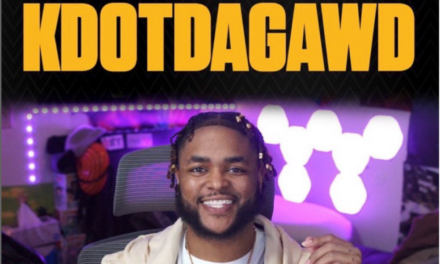With 2B people watching YouTube and 43% of internet users accessing it monthly, the video platform can work well for creators in multiple ways – your primary content distribution vehicle, a channel for repurposed content, or a marketing tactic to grow your audience.
The team at AIR has worked with YouTube for our creator and brand clients for two-thirds of the platform’s 18-year life. We’ve noticed patterns and unspoken rules that we’re sharing to help you no matter where you are in your journey. (Editor’s note: A lot of these ideas work outside of YouTube, too.)
1. Subscriber count doesn’t matter much. Focus on the number of views, trust earned, and audience engagement. A creator with 3M subscribers can earn only $1K monthly, and another with 50K subscribers can earn several times more. (The difference often occurs based on the creator’s content tilt and business model.)
2. Watch time remains a critical metric. Analyze audience retention and consider how to motivate the audience to stay on the channel longer. Improving the content, livestreaming, or creating playlists on the same topic are just a few options.
3. Recycle content. Make Shorts of the best-performing fragments from your long videos. It increases monetization opportunities and may bring you new audiences through YouTube’s discovery algorithm. Another option is to compile related evergreen content and launch it as livestreams on your channel.
Creator tip: Compile related evergreen content and launch it as a livestream on your @YouTube channel, says Vira Slyvinska (@l_vira) of @AIR_Media_Tech. #ContentEntrepreneur #CreatorEconomy Share on X4. Analysis is as important as creativity. Dig into your channel metrics, study your competitors to understand their strengths, analyze trends, experiment, and constantly improve your content and reach your target audience.
5. Try new features. The platform constantly introduces updates and encourages users to make use of them. So stay tuned, experiment, and create new content using the relevant new features. (YouTube’s blog offers a wealth of resources.)
6. Know your videos’ lifespan. Don’t get stuck on trending videos, believing they will remain so. You can and should make evergreen (timeless) videos. Content that remains relevant for a long time is an investment, attracting new audiences and creating consistent monetization opportunities.
7. AdSense still brings the lion’s share of YouTube-distributed revenue. So ensure you set up ad displays in your videos correctly and effectively. Put ads at the beginning when the audience retention is highest, as well as in the middle and the end.
8. Embrace additional monetization opportunities. YouTube offers a multitude of monetization tools. Pay close attention to super features, memberships, and Shorts monetization. In most cases, you won’t even have to create new content, and the additional income can be substantial. Some of our partner creators have increased their channel revenue by 50% after activating the membership feature and managing it properly.
9. Know you can’t please everyone. Of course, it’s important to gain the audience’s trust and listen to your community. But opinions among viewers who watch your videos can be diametrically opposite. Take constructive feedback into account and let haters hate.
10. Patience is a virtue. Growing a YouTube channel is hard work that requires diligence and dedication. You’ll most likely see the first significant results after a year as your channel’s audience grows. So be patient, soberly assess your capabilities and choose content topics you’ll be really interested in covering in the long run.
11. Consistency is critical. High-quality equipment is less important in the beginning than regular posting and consistency in content creation. Start with what you have and improve as you go.
High-quality video equipment is less important in the beginning than posting consistently via Vira Slyvinska (@l_vira) of @AIR_Media_Tech. #CreatorEconomy Share on X12. Sound quality is paramount. So get yourself a good microphone. Use special programs to improve the quality of recordings, such as Adobe’s Enhance Speech. No matter how good your content is, no one will sit through it if it sounds like a radio noise.
13. A bad thumbnail can kill a good video. Thumbnails are the visual hook the viewer sees when deciding whether to watch the video. So invest your time and creativity in the thumbnail design, and try different options to see what works best.
14. Creating videos in batches saves time. For example, it’s better to write five scripts, shoot five videos, and edit them simultaneously instead of just making one video after another.
15. Delegate tasks and keep working on what you do well. Over time, you may need to hire a team. Also, as the channel grows, some questions related to development on the platform may arise. Asking for professional advice may save you a lot of time and energy.
16. Modern tech can be a good helper. We live in an age of numerous AI breakthroughs and already use it for a significant part of our work. ChatGPT may write a good draft of the script for your video so you can revise and edit rather than write it from scratch. Midjourney generates a draft thumbnail. Your finishing touches will require much less time than the manual work of designers.
17. Enter new markets. If you’ve fully tapped your domestic market, enter new geographies with content translations and localization. Start with metadata and subtitles. If the results prove positive, take your content translations further. A number of our partners have achieved great success. For example, the world’s most significant kids’ vlog, Kids Diana Show (108M subscribers), has 1.5M more subscribers on its translated channels than on its main channel.
Established YouTube channels should add translated channels to expand their audiences, says Vira Slyvinska (@l_vira) of @AIR_Media_Tech Share on X18. Last but not least, success doesn’t always happen on the first try. If the channel doesn’t bring you the desired results after a long time, analyze potential reasons and consider launching a new channel from scratch.
We learned these main takeaways from working with YouTube creators of various sizes and content categories. Of course, in each case, the secrets of success may differ, but these recommendations can be applied to most channels.
About the author
Vira Slyvinska has been in the creator economy for over seven years. As a head of global business development at AIR Media-Tech, she is responsible for creating new products and partnerships for AIR creators to help them grow and monetize their influence. Vira is speaking at VidCon, VidSummit, Clamour Creator Summit, and other conferences, lecturing on YouTube channel development for creators and brands










